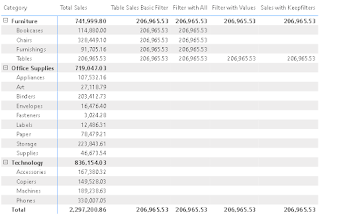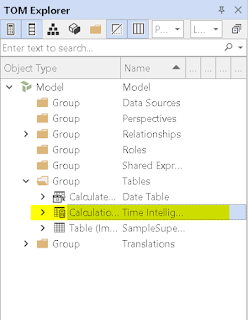Do we really need Keepfilters in DAX?

Writing a DAX can be tricky at times and making it efficient for the system is always a challenge for a BI Developer. The most prominent example is the use of filters in DAX. There are zillion ways to filter something in DAX and attain the same result but when you look behind the scenes you will get to know what effect it makes on performance. Looking at the above image it all looks the same. In this blog, we will cover the most common scenarios to use filters including the use of filter with all, filter with values, and keepfilters. I am using the sample superstore data for demonstration. The idea is to get sales for "Tables". The DAX is as follows. The most common and basic approach will be this. Looking at the matrix it gives the sales amount of tables as the total sales for "Furniture". If we use this in a table or matrix results can be perplexing for the user. Considering the total it does make sense. But we want every sub-category to get their respective sales...








